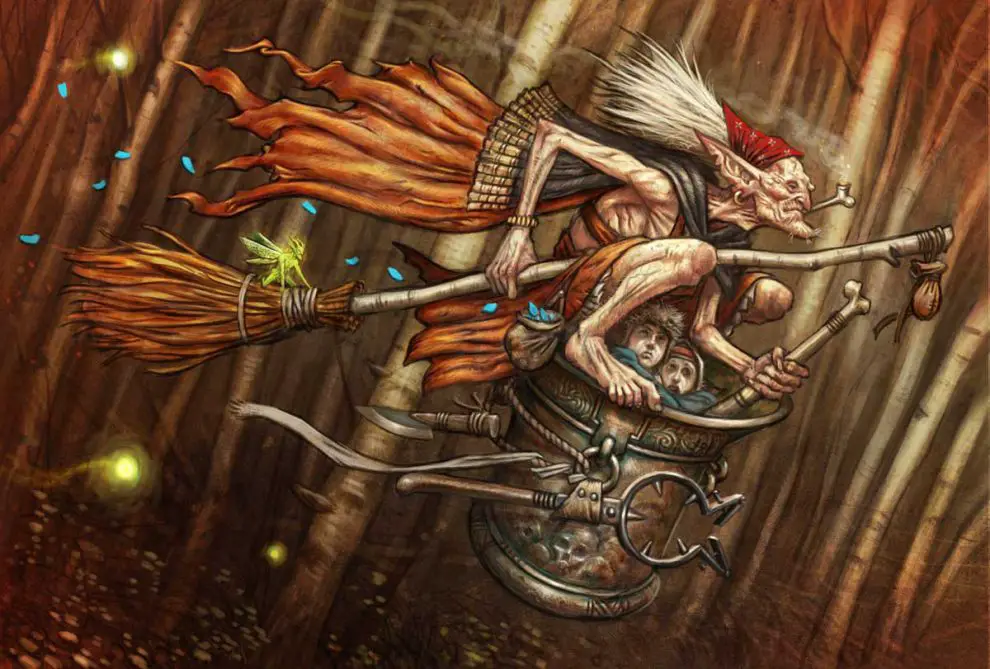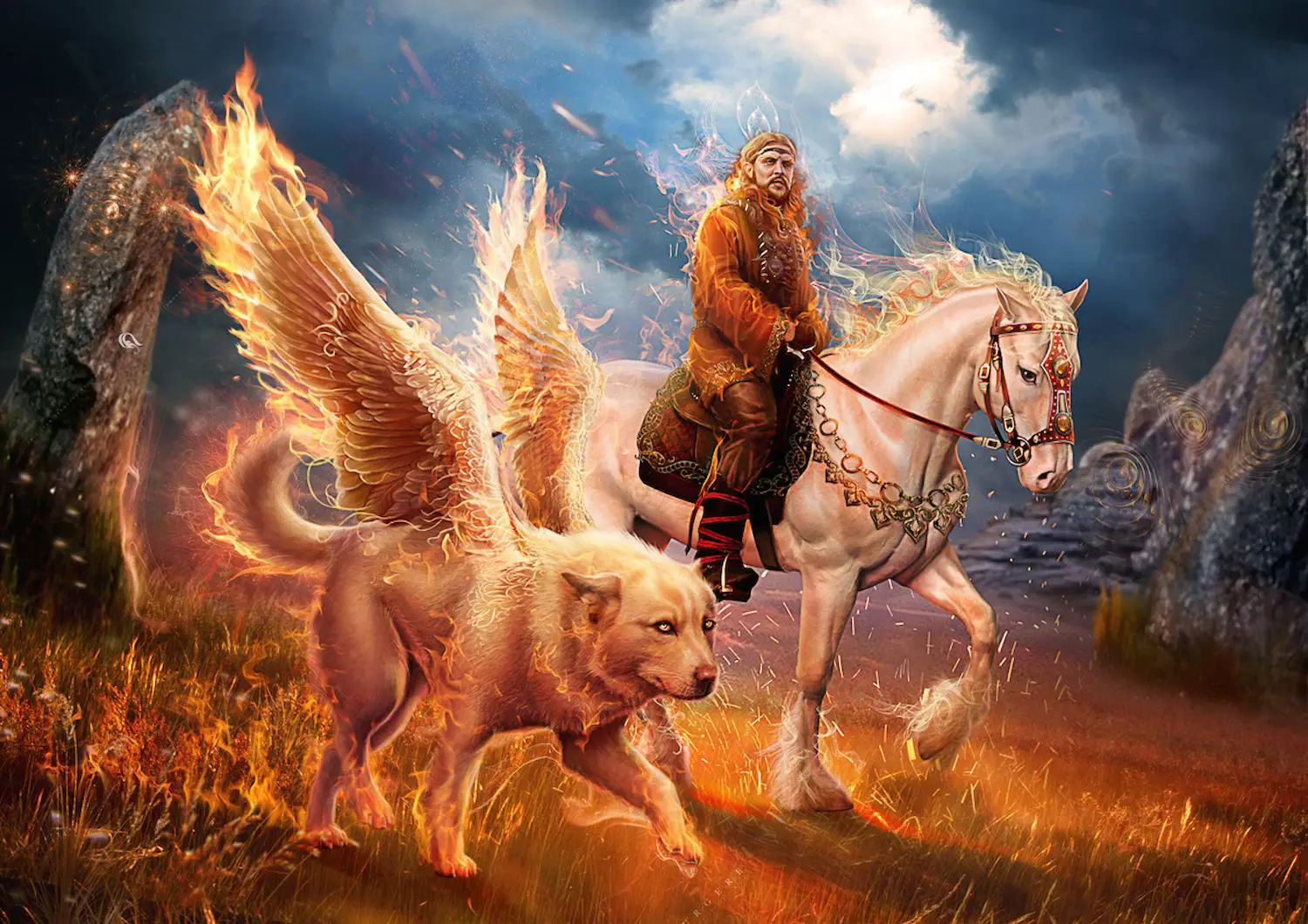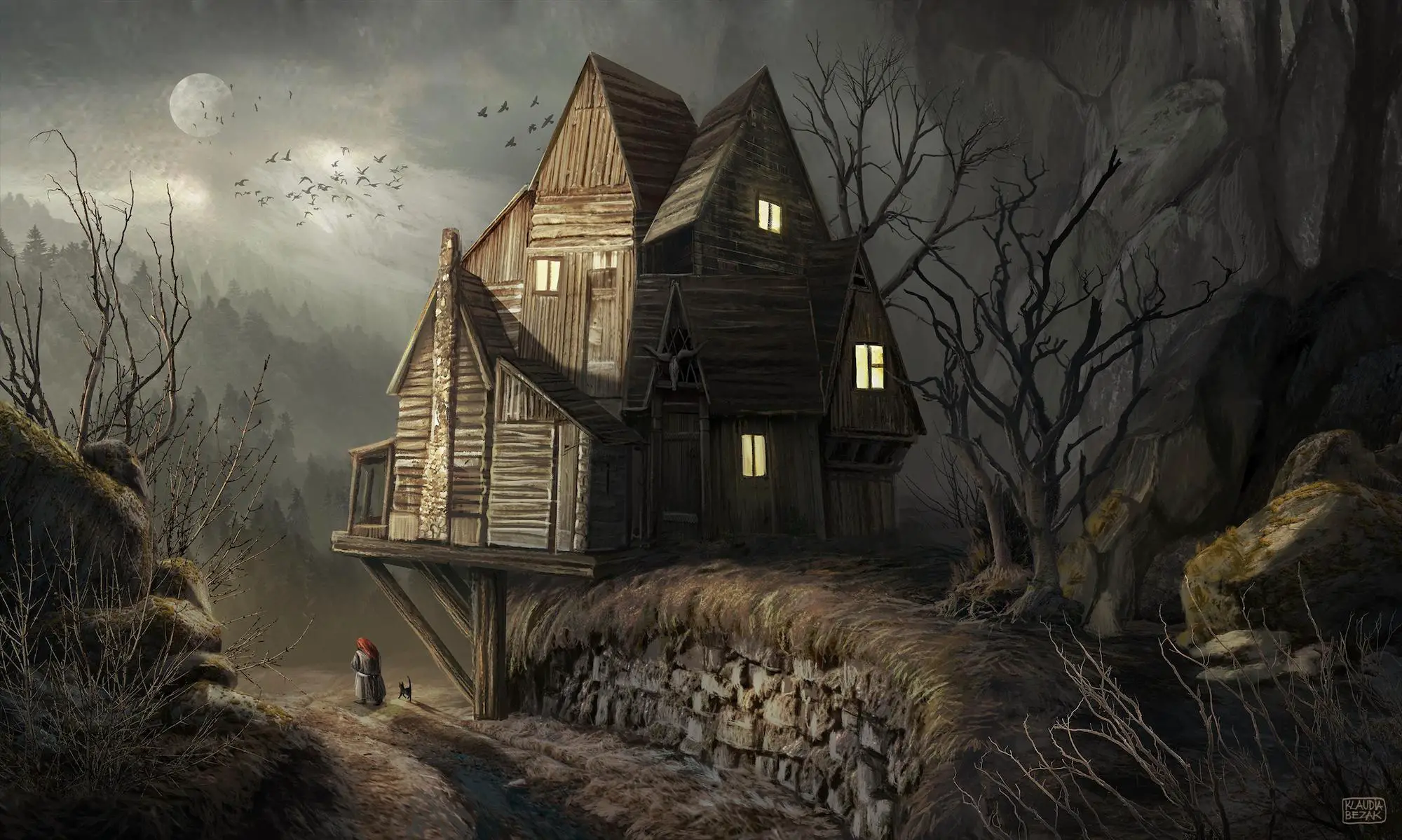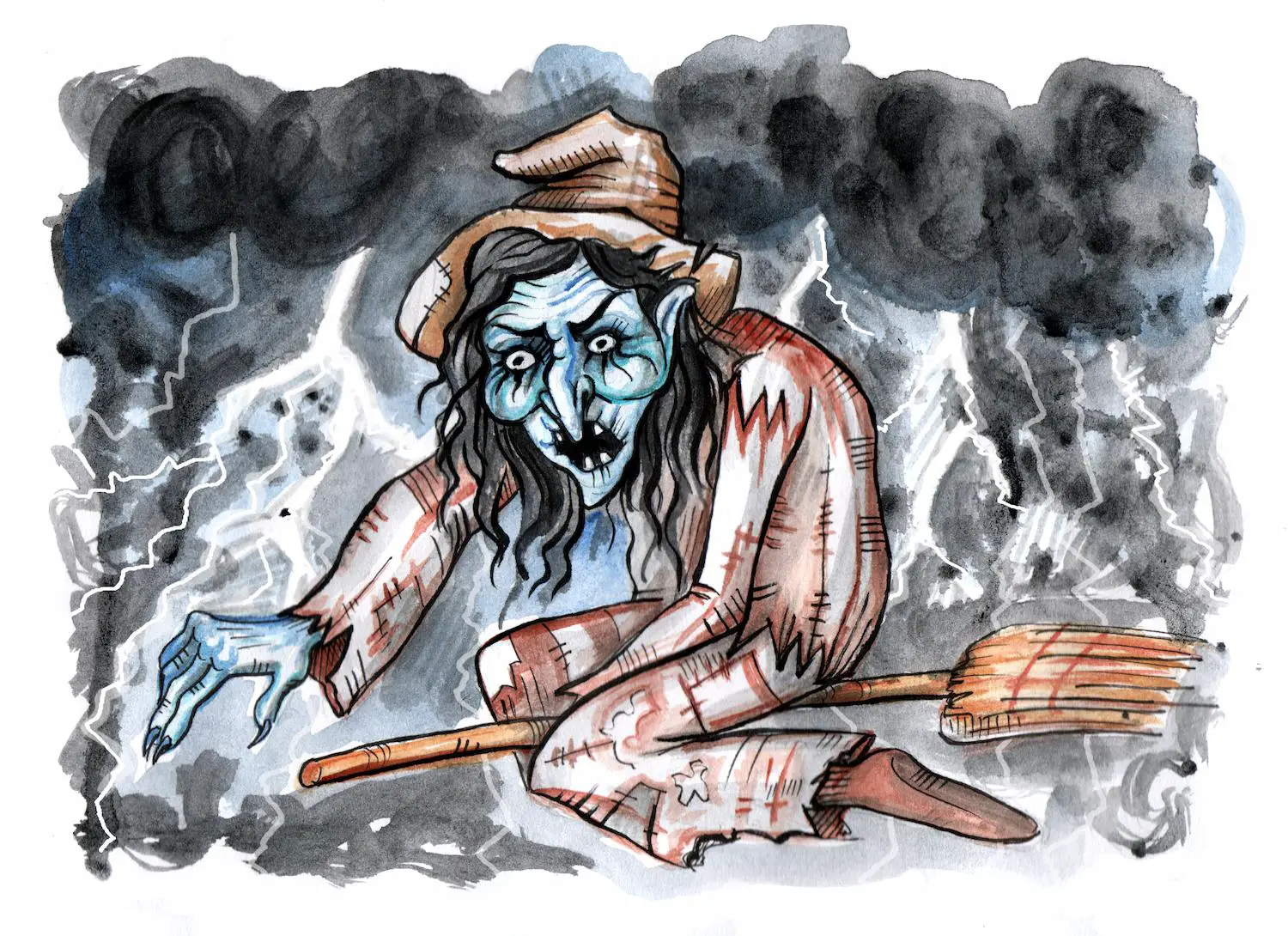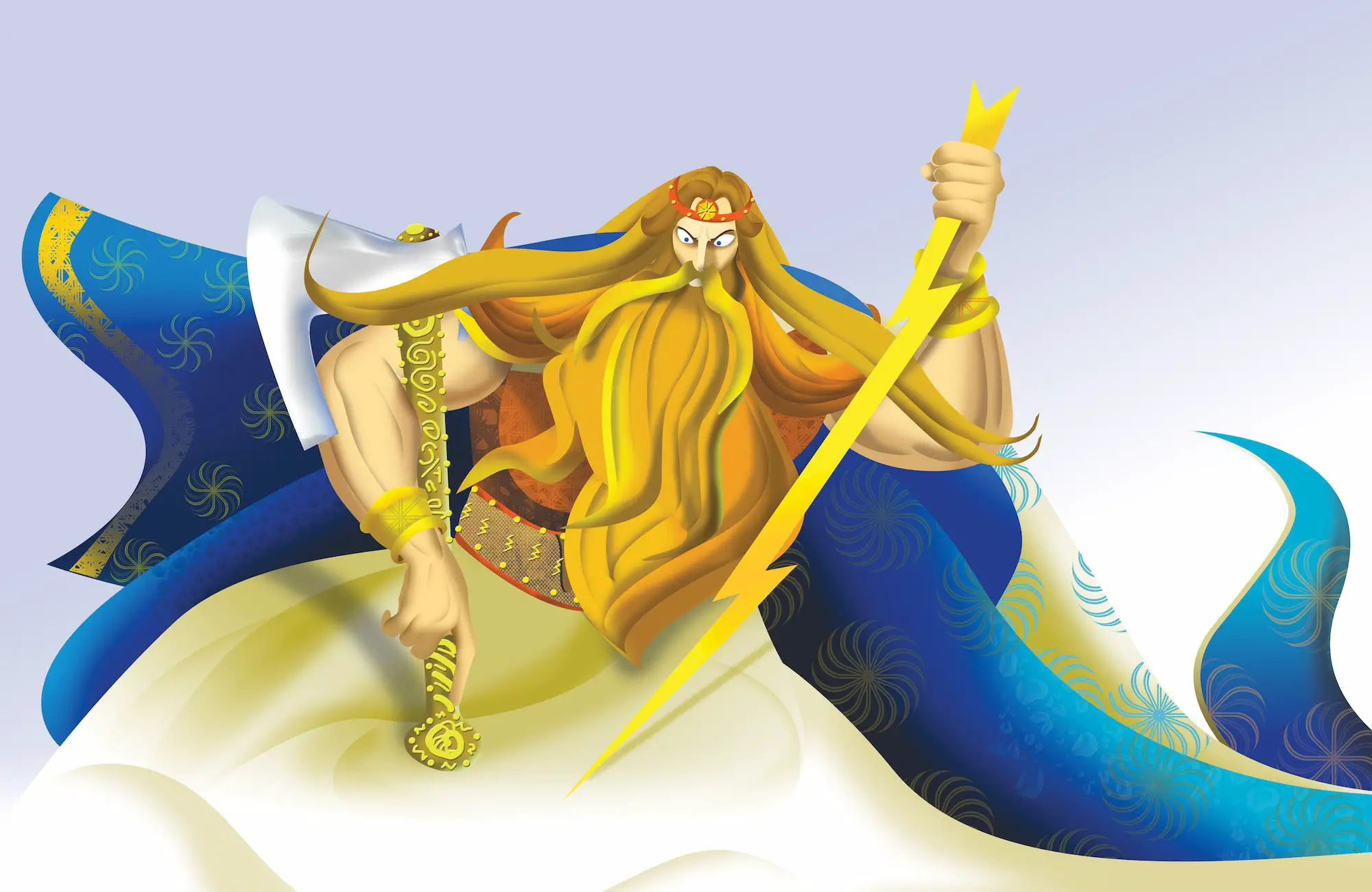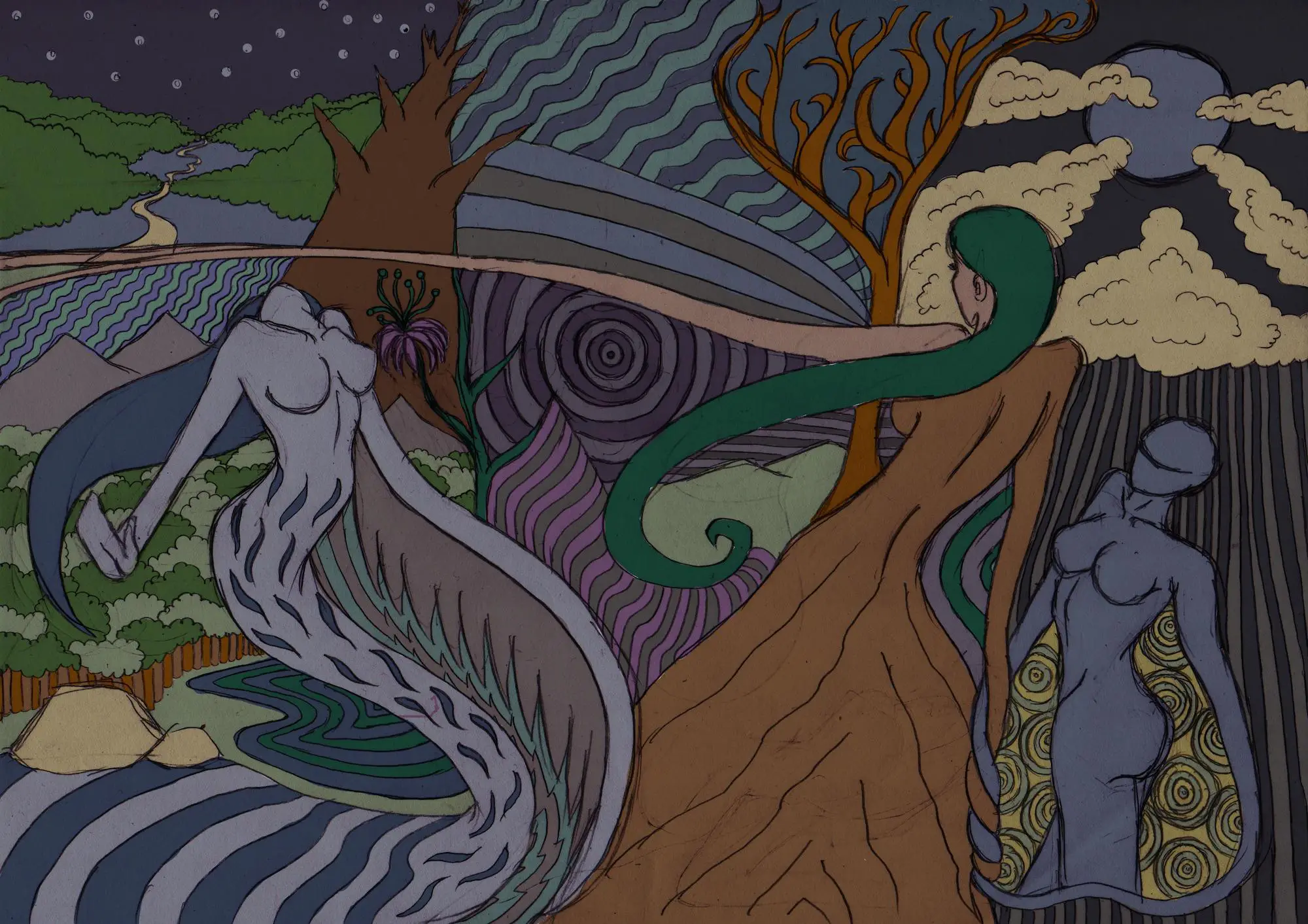Baba Yaga is a character from the Slavic Eastern European folklore. She is present in a lot of folk tales that date back to the 18th century, although her origin is far older.
Baba Yaga has been associated with ancient mythological characters (she’s like the Boogeyman in Russian mythology).
Table of Contents
What Does Baba Yaga Mean?
In the Slavic languages, the word “baba” means “old woman” or “grandma” although this word was sometimes used as a term that would describe female demons or specific ailments like measles (also called “baba Sharka”).
In addition, the word “baba” was also used for some astronomical phenomena or concepts of time and seasons, such as “baba Gale” which described the moon, or “baba Marta” which was the other name of the month March.
The origins of the word “yaga” are quite unclear although some experts suggest that the word means “evil” or “horror”.
Etymology
The variation of the full name “Baba Yaga” can be found in the languages of the Eastern Slavs. As a reference to the Russian folklore, the word “baba” in Old Russian means “midwife”, “fortune teller” or “sorceress”.
The modern Russian, on the other hand, defines the word “babushka” as “grandmother” or simply “old woman”.
In Bulgarian and Serbo-Croatian, “baba” means “grandma”, however, in many modern Slavic languages, the word “baba” is a pejorative synonym of the word “woman” (suggesting a foolish woman).
The great number of associations related to the origin of the character of Baba Yaga created many theories that, nonetheless, support the main assumption that “baba” means “old woman” or “grandmother”.
Moreover, “baba” was maybe added to distinguish the Baba Yaga from her possible male counterpart in the myth.
As it was mentioned before, the second element of the name “Yaga” has a rather problematic etymology. Scholars have never made an adamant consensus over its meaning. “Yaga” appears in various Slavic languages.
In Serbian, it has been related to “jeza” and interpreted as “horror” and “shudder”.
The term also appears in the Old Church Slavonic as “jeza” or “jedza”, meaning “disease” or “illness” while in other Indo-European languages the element “iaga” is associated with the Lithuanian “engti” which can be translated as “to exploit” or “to abuse”.
Baba Yaga in Russian Folklore
Baba Yaga (also known as Baba Yaya), is the central character in many Russian folk tales. Her story is also present in folklore, i.e. the fairy tales that come from Ukraine and Belarus.
Baba Yaga appears, for the first time, in the “Russian Grammar” of Mikhail V. Lomonosov (the middle of the 18th century) where she is mentioned amidst other Slavic folk characters.
Then, in the same work, she is mentioned within a list of Slavic gods and creatures in a contrastive analysis of Roman and Slavic mythology.
The Baba Yaga Character Versions in Fairy Tales
Baba Yaga appears as a character with a wide range of attributes and distinctive features of a mythical being. She is presented as a creature with chicken legs, a mop or broom, and, in some versions, living in a chicken-legged hut, often portrayed holding a mortar and pestle.
The most common description of her physical appearance is “bony legs” or “chicken legs” along with “Russian nose (scent)”. The first one refers to her flexibility when capturing her prey while the latter to her ability to sense those who are about to visit her hut.
Fairy tales pejoratively describe her nose, breasts, buttocks, and dirty nails, and some versions even depict her as several women who are sisters (in fact “Baba Yagas”).
Baba Yaga in the Work of Alexander Afanasyev
The tales of Baba Yaga were predominantly revised and collected by the Russian Slavist and ethnographer Alexander Afanasyev who published nearly 600 Russian fairy tales and unique folklore tales, creating one of the largest collections of folklore in the world [1].
The version of the tale “The Maiden Tsar”, which is a part of his collection, portrays Baba Yaga’s tale as a story of three women visited by Ivan, the handsome son of a merchant:
He journeyed onwards, straight-ahead… and finally came to a little hut; it stood in the open field, turning on chicken legs.
He entered and found Baba Yaga the Bony-legged. “Fie, fie,” she said, “the Russian smell was never heard of nor caught sight of here, but it has come by itself. Are you here of your own free will or by compulsion, my good youth?”
“Largely of my own free will, and twice as much by compulsion! Do you know, Baba Yaga, where lies the thrice tenth kingdom?” “No, I do not,” she said, and told him to go to her second sister; she might know.
When Ivan finds a small hut, almost the same as the first he asks the other Baba Yaga the same question but she doesn’t know so she sends him to the third, warning him:
“and wants to devour you, take three horns from her and ask her permission to blow them; blow the first one softly, the second one louder, and third still louder”.
Ivan continues walking and manages to find the chicken-legged hut of the youngest of the three sisters.
The third baba Yaga tells him about “the Russian nose”, shows her evil teeth, and proclaims that she wants to eat him. Ivan blows the three horns and thus calls the birds to arrive and swarm the hut.
One of these birds is a firebird that saves Ivan by telling him to hop on its back. Ivan is finally saved and the bird flies away, leaving Baba Yaga behind angry and with a fist full of firebird feathers.
Other tales in the collection of Afanasyev that mention the character of Baba Yaga are: “Realms of Copper, Silver, and Gold”, “The Sea Tsar and Vasilisa the Wise”, “Marya Moryevna”, “By Command of Prince Daniel”, “Vasilisa the Fair”, The Magic Swan Geese”, “Baba Yaga and Zamoryshek” and “Legless Knight and Blind Knight”.
Baba Yaga and the Illustrations of Ivan Bilibin
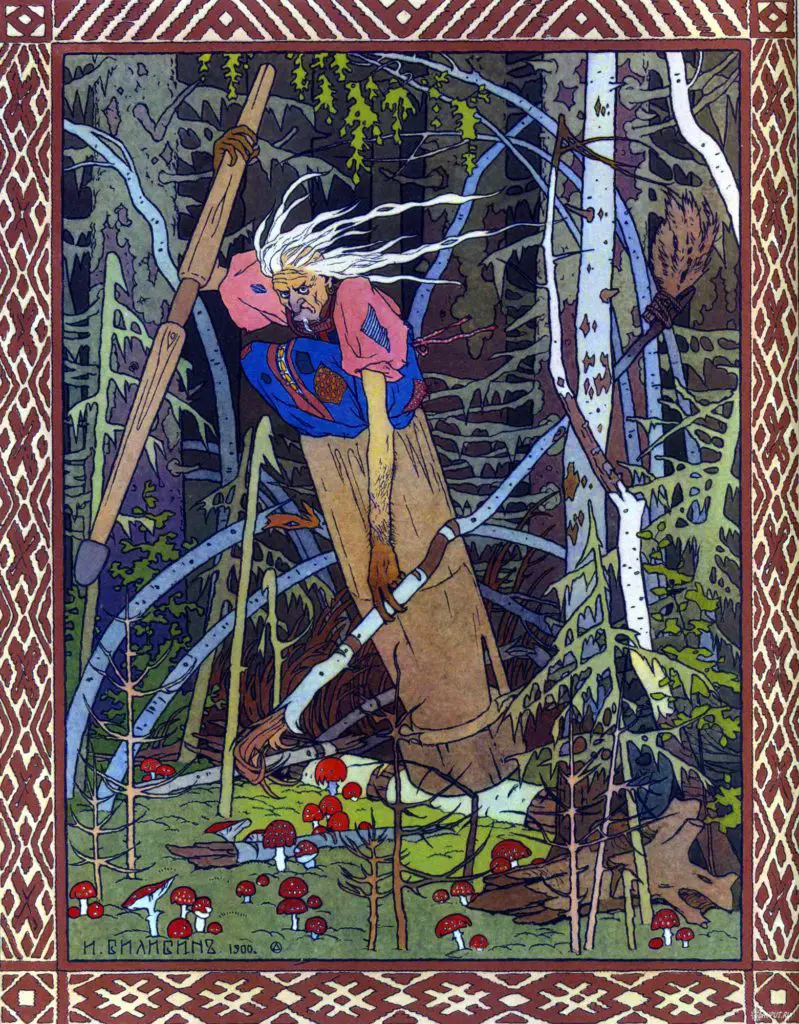
The character of Baba Yaga has inspired many artists, including the illustrator Ivan Yakovlevich Bilibin who created majestic illustrations for Russian fairy tales [2].
One of his best known and acclaimed illustrations is the one called “Vasilisa at the Hut of Baba Yaga” made for the tale of Vasilisa the Beautiful (a Russian fairy tale in Afanasyev’s “Narodnye russkie skazki”).
The story of Vasilisa the Beautiful is a very famous tale of the daughter of a merchant whose mother dies. She then finds herself in a difficult situation with her new stepmother who keeps on giving her impossible tasks.
One night she is sent to fetch light from the house of Baba Yaga because the family is left without candles. She came to the house that stood on chicken legs and was surrounded by a fence made of human bones.
In this story, Baba Yaga tells Vasilisa to either earn the fire or be killed. She has to clean the house, wash Baba Yaga’s clothes, and cook for her. The tasks were done in a short time and Baba Yaga’s house was put in order although.
The story continues in a labyrinth of hardships but luckily Vasilisa returns home and the tale ends on a happy note with her becoming a successful seamstress in the capital of Russia and the Tsar falling in love with her.
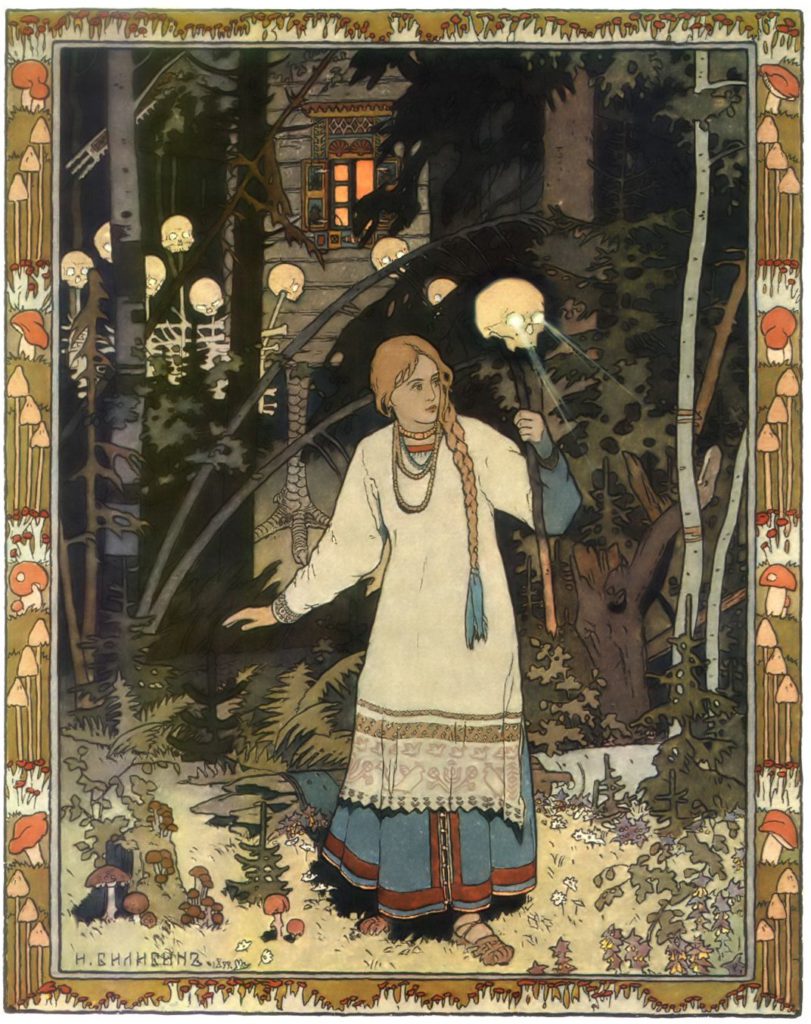
Variants of the Baba Yaga Russian Story with Vasilisa
Some of the versions of this tale include white, red, and black riders which give a mythological note to the character of Baba Yaga.
Some theoreticians interpret the story through the theme of female liberation, that is, the journey of Vasilisa fluctuates from subservience to strength and independence whereas Baba Yaga is the “wild feminine” principle that Vasilisa has been separated from.
Baba Yaga and Lubki
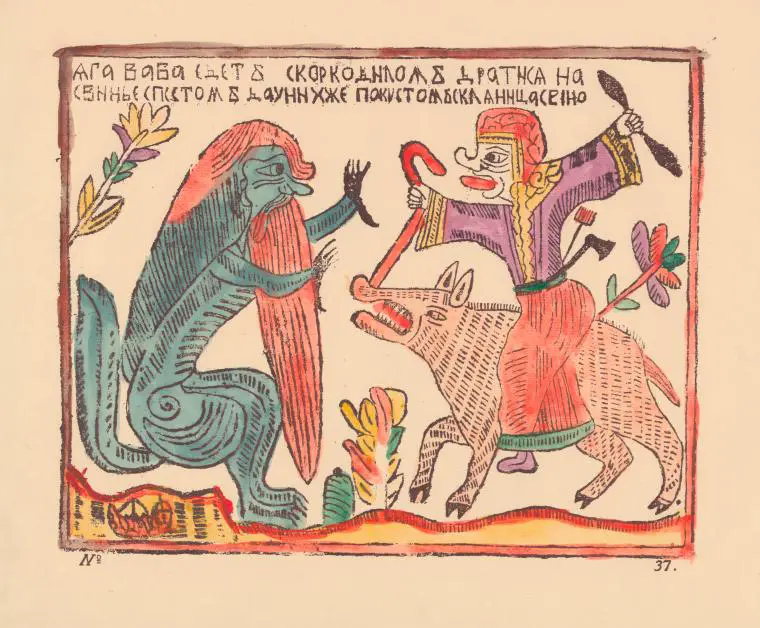
In Russia, Baba Yaga gained massive popularity as a character when she appeared on woodblock prints, known as lubki (popular in Russia in the late 17th and 18th century) [3].
On the lubki, Baba Yaga is depicted as going to battle against a reptilian creature, described as the “crocodile”. Some interpretations explain this scene as a political parody of the time when Peter the Great persecuted the Old Believers who called him a “crocodile”.
Some of the lubki represented a ship below the crocodile and Baba Yaga dressed in a Finnish dress, as a Russian “chukonka”- a Finnish woman in Russia, a stranger.
Another version of the lubok portrays Baba Yaga with a bagpipe. According to the folklorists, this scene represents the family and marital life of Peter the Great and Catherine I.
In addition, it is said that the motifs of the lubki related Baba Yaga to shamanistic practices and interest in shamanism at the time (so the crocodile is interpreted as a being that fights witches).
The scholar Andreas Johns, however, isolated the myth of Baba Yaga from the shamanistic interpretations and said that she could be seen as a witch who is literally evil but treated humorously on the prints or as a “figurative witch” which, in fact, is an unpopular foreign empress.
Related Figures and Analogues of Baba Yaga
The mythology of the West Slavic people has the character of Jezibaba, a figure that closely resembles Baba Yaga. Jezibaba is also mentioned during the medieval period. In addition, Polish folklore has the figure of Jedza.
Scholars and folklorists have identified a wide range of beings in folklore who share similarities with Baba Yaga.
The similarities sometimes have a direct correlation or contact regarding the culture between the Eastern Slavic people and the people from the neighboring countries.
In Eastern and Central Europe, these figures are the so-called “Forest Mother” or “gorska maika” in Bulgaria.
The Hungarian call her the”Iron-nose Midwife” or the “vasrou baba”, the Serbian “Iron-tooth” or “Baba Korizma” or “Baba Roga” (used for scaring children in Serbia, Croatia, Montenegro, and Bosnia). She is also known as “Jezi Baba” in Slovenia.
The Romanian folklore, the figures “mama padurii” have been equated to the “Forest Mother”.
In neighbouring Germanic Europe, similarities were found between the Alpine “Perchta” and “Holda” (in the folklore of Central and Northern Germany and in the Swiss folklore).
Some scholars said that the concept of Baba Yaga was influenced by the contact of the eastern Slavs with the Finno-Ugric and Siberian people.
The Karelian character “Ogress” shares some aspects and similarities with Baba Yaga, though only negative ones. In other Karelian tales, there are characters that are helpful old women called “akka”.
Baba Yaga in Modern Culture
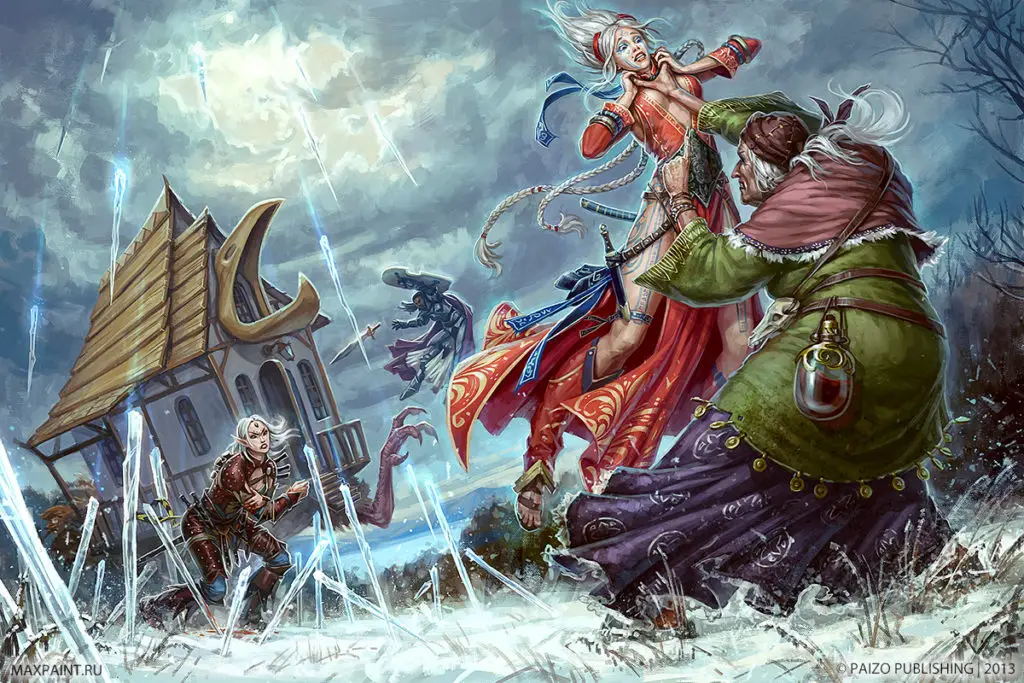
The character appears in many contemporary novels, TV series, films, stories, video games, art projects etc.
She appears in the video game “The Witcher 3: Wild Hunt” in 2015 and three years later in an honorarium art project. A 22ft tall sculpture with chicken legs was placed at the “Fly Ranch Project” in Gerlach, Nevada [4].
Another video game that includes her is “The Rise of the Tomb Raider” with a special sequence in her honour, set in the depths of the Siberian wilderness.
In the animated series “Scooby-Doo! Mystery Incorporated” Yaga and her house are brought to Crystal Cove by some of the main antagonists who think that the house contains a piece of planispheric disc.
In addition, she appears in Scooby-Doo! (special edition for Halloween) called “Be Cool, Scooby-Doo! where she carries the role of the main villain.
This mythological character also appears as the main antagonist of the Supernatural season 15 episode “Drag Me Away (From You)” [5].
She is portrayed as an immortal witch who preys on children and is fought by the protagonists until they kill her.
In DC’s “Legends of Tomorrow” she is a powerful witch who worked for the Adversary, first acting as his spy but also using her abilities to magically alter her appearance into Red Riding Hood so she could infiltrate Fabletown.
Was Baba Yaga Real?
It is a mystery whether Baba Yaga actually existed or not. However, the fact that she appears across mythologies and fairy tales so often may lead one to believe that maybe she really existed as an evil and old woman.
References
- https://archive.org/details/russianfolktales00afan_0
- https://www.prlib.ru/en/news/1300964
- https://therussianblog.wordpress.com/2014/12/07/yaga-baba-rides-off-to-fight-the-crocodile/
- https://flyranch.burningman.org/
- https://www.imdb.com/title/tt10717922/







